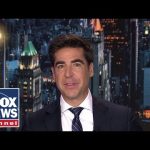In a rare and headline-grabbing meeting, former President Donald Trump and billionaire entrepreneur Elon Musk sat down to discuss an ambitious vision for America’s fiscal future. The conversation, centered on Musk’s Department of Government Efficiency (DOGE), highlighted their shared goal of slashing federal waste, reducing the national deficit, and even returning savings to taxpayers. While critics question the feasibility of their proposals, Trump and Musk’s collaboration underscores a bold attempt to reshape the federal government’s approach to spending.
Musk, who has spearheaded DOGE since Trump’s return to the White House, emphasized the staggering inefficiencies within federal operations. According to Musk, even a modest 1% improvement in government efficiency could save billions annually. With an eye toward long-term fiscal health, Musk outlined plans to streamline federal agencies, eliminate redundant programs, and root out fraud—initiatives he claims have already saved $55 billion in just three weeks. However, his ultimate goal is far more ambitious: cutting $2 trillion in federal spending by 2026.
Trump, never one to shy away from dramatics, painted a dire picture of America’s financial trajectory without immediate reform. He likened the federal budget to a sinking ship and called for drastic measures to prevent economic collapse. Trump also floated the idea of a “DOGE Dividend,” where 20% of the savings identified by Musk’s initiative would be returned directly to taxpayers in checks of up to $5,000 per household. Another 20% would be allocated toward reducing the national debt, which currently stands at $36 trillion. While economists warn that such payouts could fuel inflation, Trump dismissed these concerns, framing the proposal as a way to empower Americans while holding government accountable.
The discussion also veered into state-level fiscal policies, with Trump criticizing high-tax blue states like California and New York for their financial mismanagement. He contrasted these with Republican-led states boasting budget surpluses and low taxes, arguing that fiscal discipline at the state level should serve as a model for federal reforms. Musk echoed this sentiment, describing California’s lawsuit against DOGE as emblematic of bureaucratic resistance to change.
Despite their bold claims, both men face significant hurdles. Critics have pointed out that many of DOGE’s savings are either unverified or based on disputed assumptions. Legal challenges from states and federal agencies have also raised questions about the constitutionality of Musk’s sweeping authority over budget decisions. Furthermore, some experts argue that Trump’s simultaneous push for tax cuts could offset any savings achieved by DOGE, potentially worsening the deficit.
Still, the Trump-Musk partnership has captured public attention as a symbol of unconventional problem-solving in government. By combining Trump’s political instincts with Musk’s entrepreneurial vision, they aim to tackle what they see as Washington’s bloated bureaucracy and unsustainable spending habits. Whether their efforts will yield meaningful results or remain a high-profile experiment in governance remains to be seen. For now, their collaboration serves as a rallying cry for fiscal conservatives eager to see government operate with the efficiency of a well-run business—and perhaps even return some savings back into Americans’ pockets.




